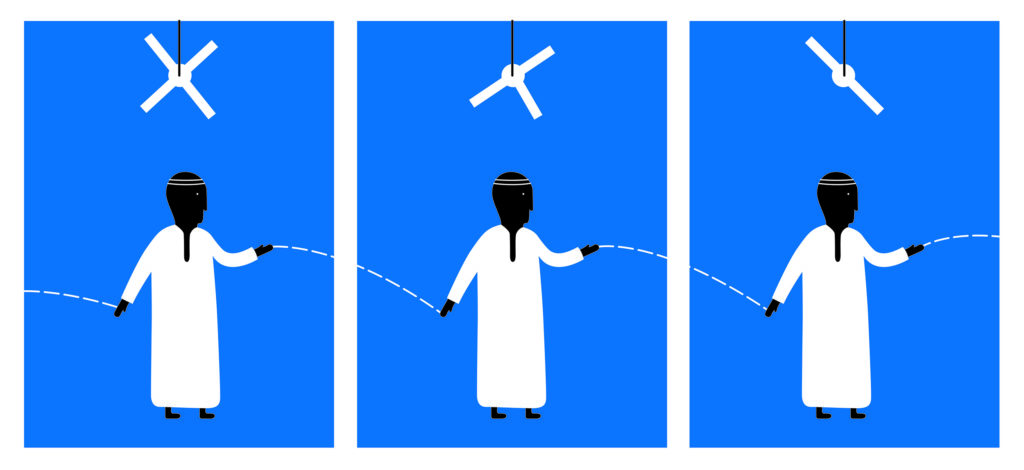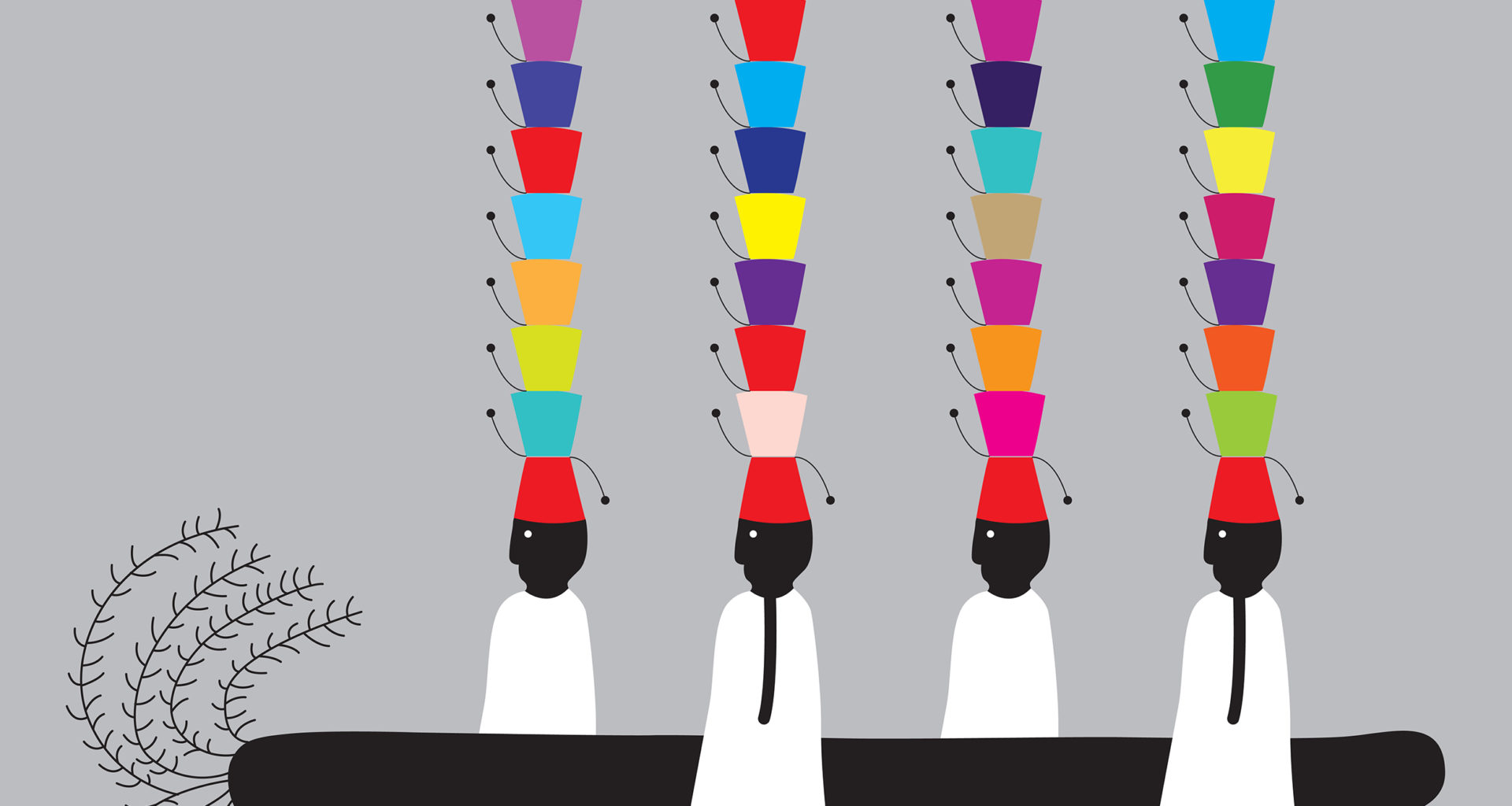Words: Jood AlThukair
English Translation: Jood AlThukair
Images: Mohamed Sharkawy, Ahmed Al Kuwaiti
Mohamed Sharkawy is an Egyptian artist whose work revolves around rural egypt, where the spirit of his birthplace and culture is evident in his work. Sharkawy never left his village until he was 17, and soon afterwards, he responded to his calling for joining the arts after one of his exhibitions in Egypt. Between Egypt and Bahrain, Mohamed opens his portal to show us a glimpse of the world he lives in, between its pages lies Umm Kulthoum, his childhood in rural Egypt, and the development of his craft in Bahrain.
In the age of internet and online communication, Jood AlThukair virtually sits in front of Mohamed Sharkawy, their screens parallel to each other despite living miles away. Together, they talk about art, Egypt, and working in crowded places.


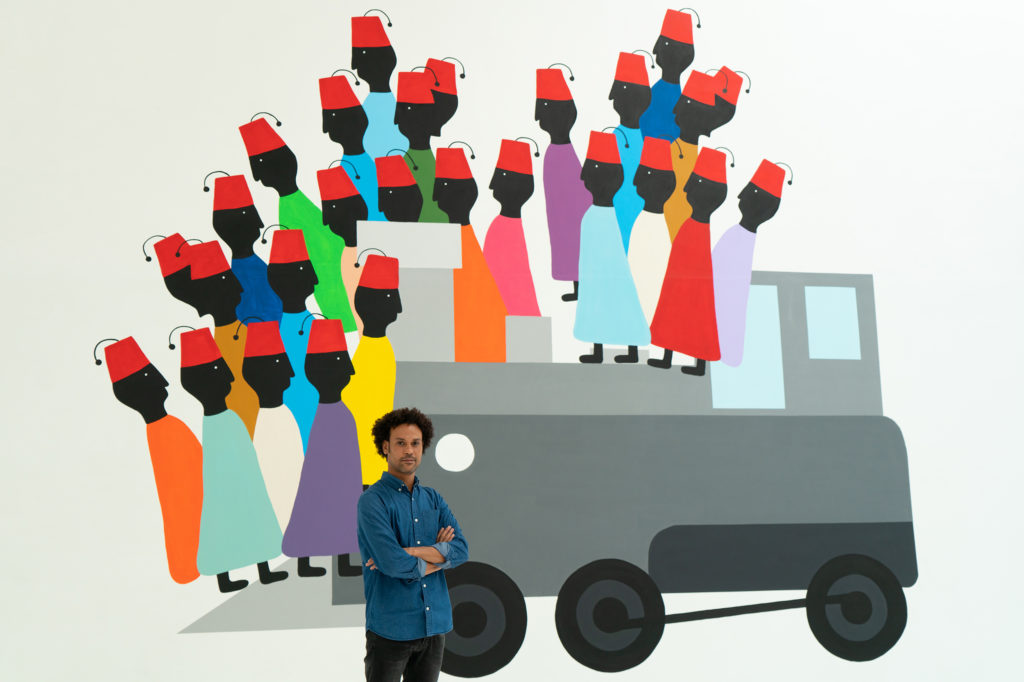

Jood AlThukhair: We notice that your pieces are two-dimensional in structure, and we also see that most of them only involve primary colors. What made you discover this art style?
Mohamed Sharkawy: I discovered this art style because I never studied art or any of its principles, which is why I do not have the ability to turn my art into three-dimensional works. I’m, purposefully, a simple and instinctual artist.
JT: Before I read your bio. on your portfolio, I felt that your paintings often allude to Ancient hieroglyphs, since your drawing of collectives heading in the same direction has also been present in ancient civilizations. I read soon afterwards that this has been intentionally done to symbolize Ancient Egyptian art, where the picture is the medium to language. How do these symbols translate to our modern world?
MS: I was born in rural Egypt, where it’s renowned for its murals that are narrative of people’s personal experiences. Using simple yet modern tools, I try to reexamine some of the scenes during my upbringing there.
JT: Tell us about your cultural background. Where did you study and when did you discover your love for the arts before it became a life path? Have you learned art through your own trial-and-error or was it more instructed?
MS: I never left my village—which was 10 hours away from Cairo by train—until I had turned 17. I went to Cairo for the first time after I graduated high school, where I worked at the Townhouse Gallery in 2002. There, I was introduced to countless artists and visitors, and I was able to practice my language and art skills. Back in rural Egypt, there weren’t any art classes offered at school, but I had always craved the practice, until one day, I had the opportunity to oversee a workshop for the Sudanese children in Egypt. I was responsible for opening and closing the space, buying the art tools, and cleaning it up afterwards.
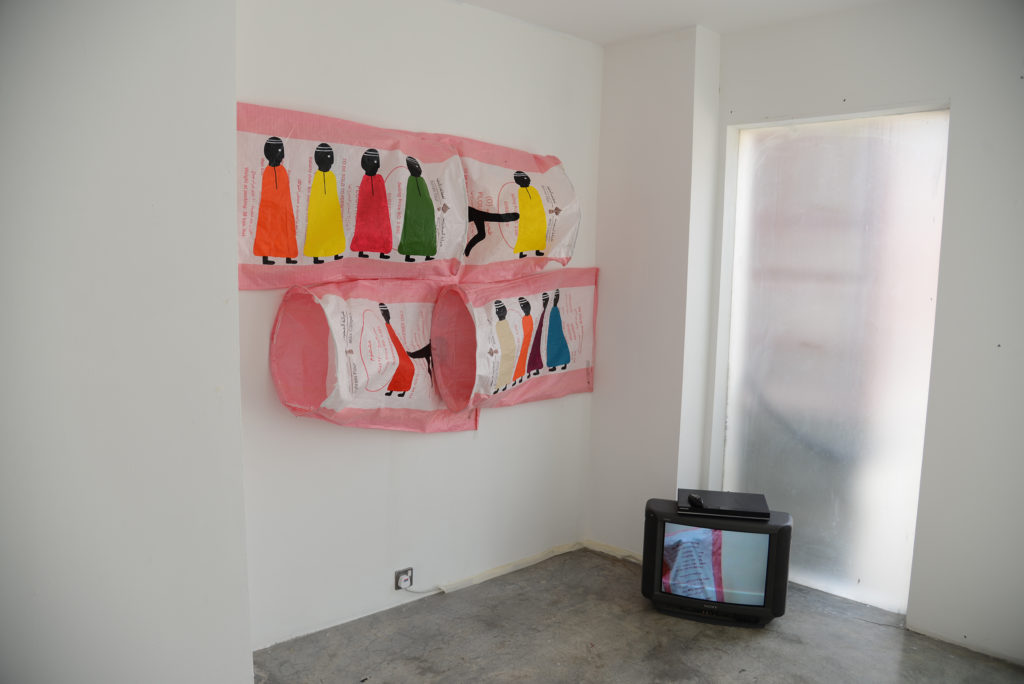
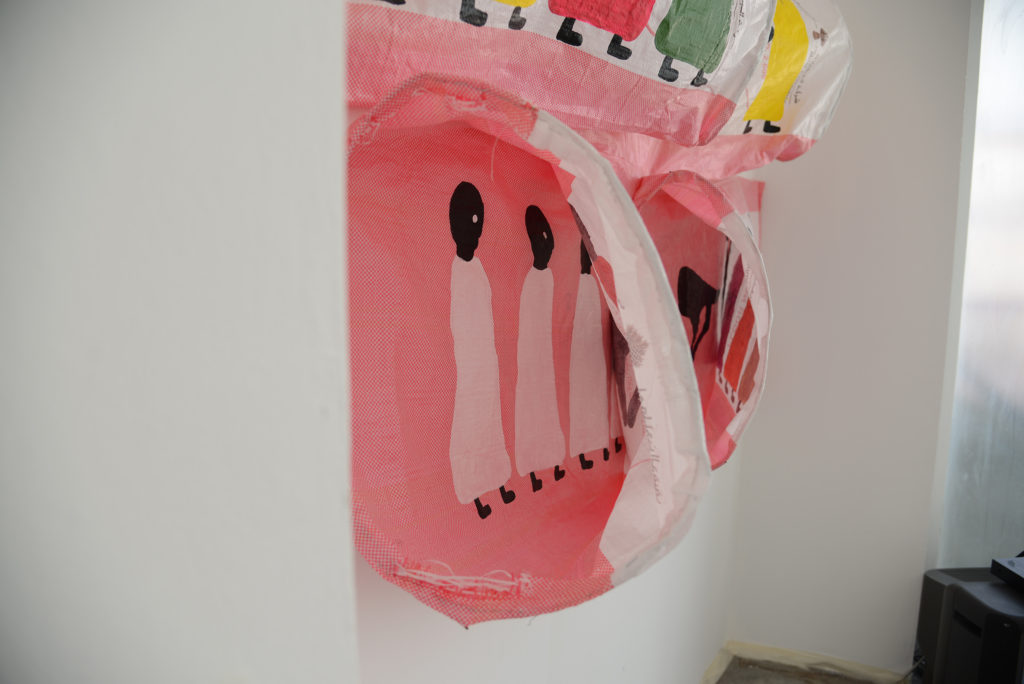
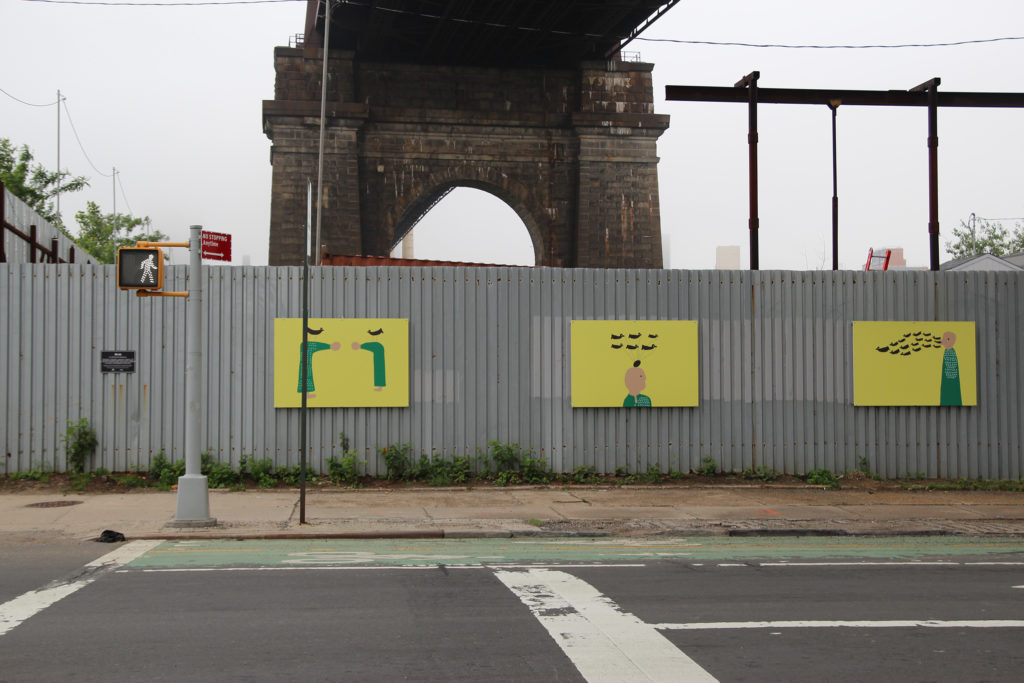
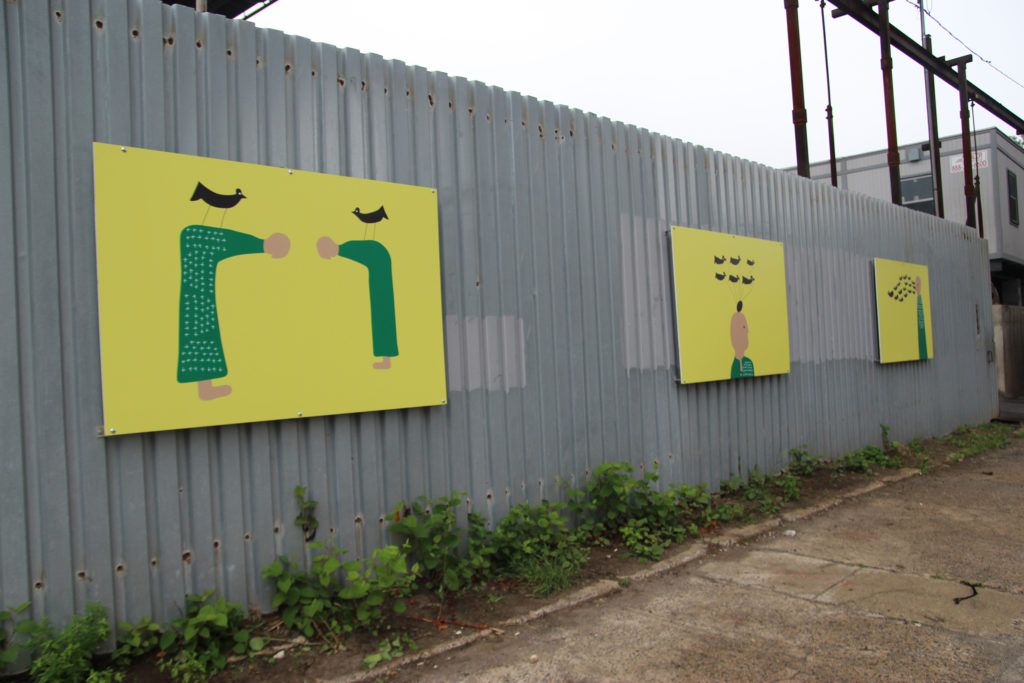
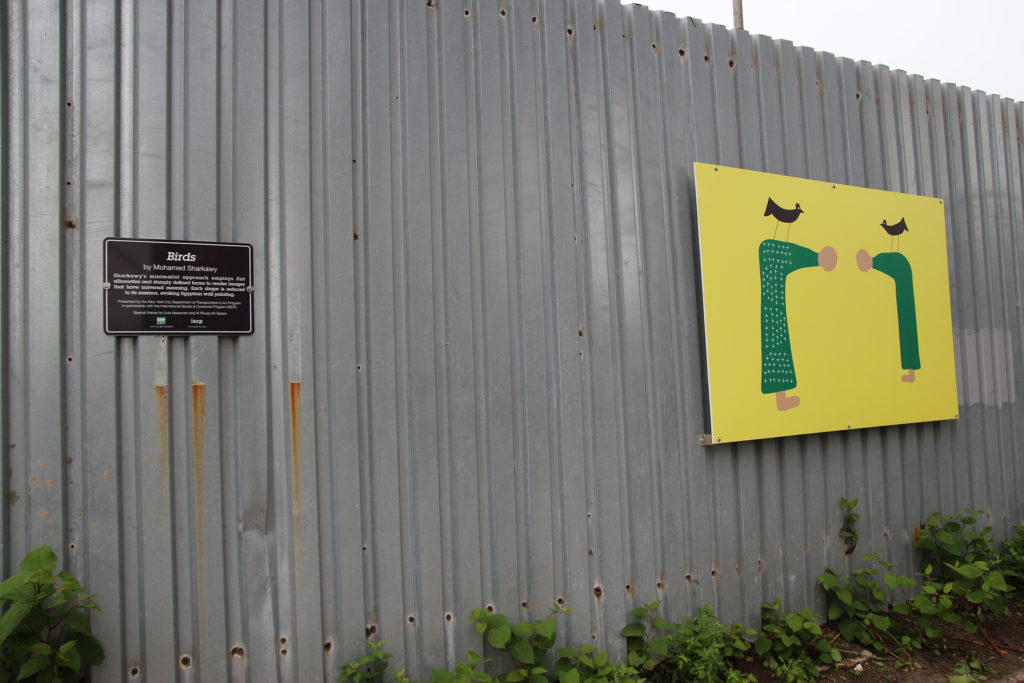
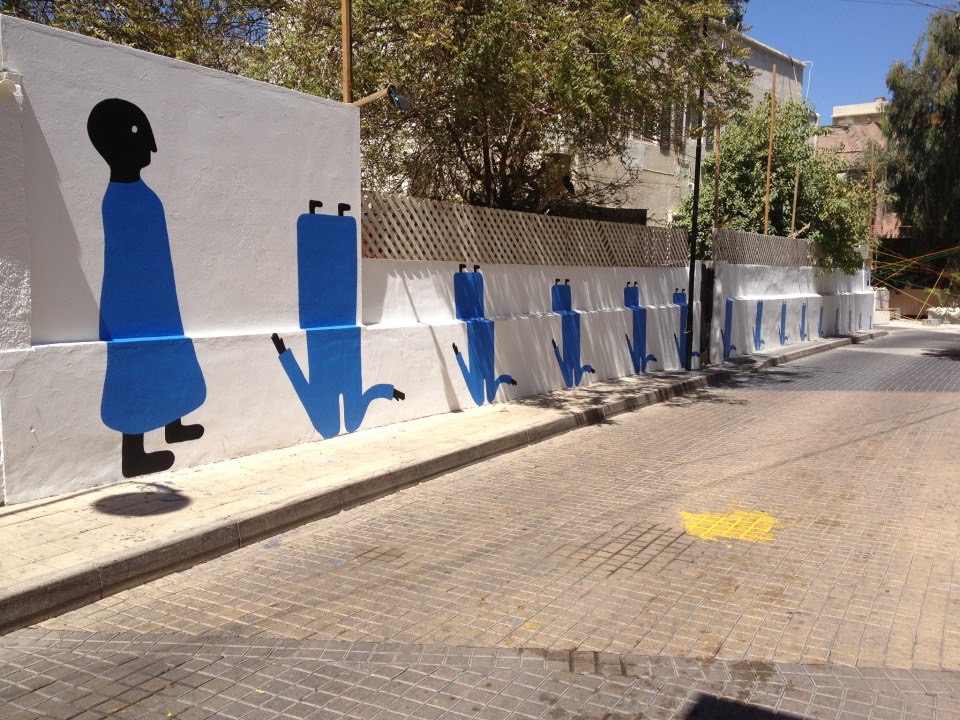
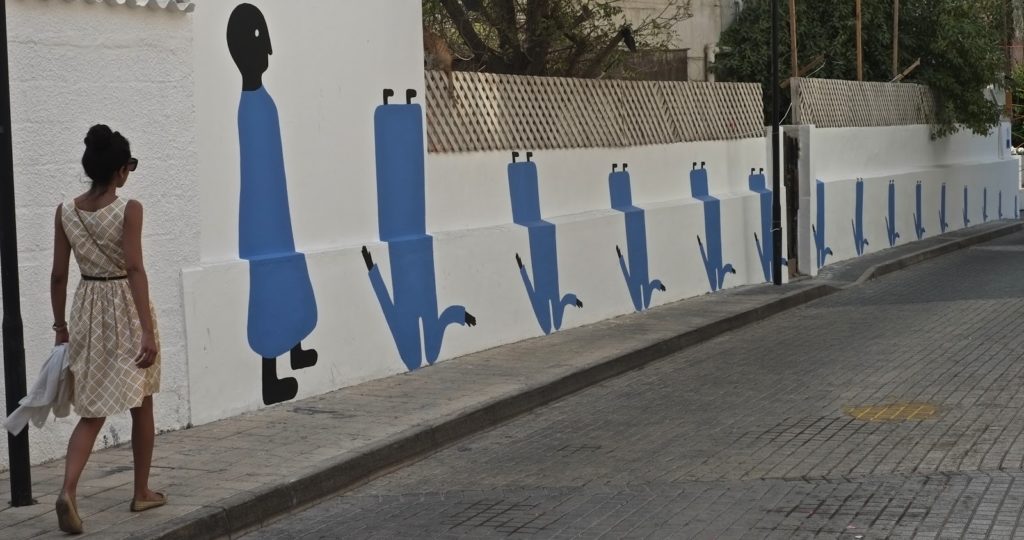
After two weeks, I felt the urge to participate, but I couldn’t because it was only offered to children. I remember telling fellow artist Huda Lutfi about my passion, so she invited me to participate within the coming three months. She even invited me to visit her studio, where she watched me create my pieces. I remember her giving me some advice as well.
As a rural Egyptian, 90% of my works allude to rural Egypt. None of my paintings directly connect to Ancient civilizations (the Pharaohs), but instead I focus on what has been lost, forgotten, or neglected things. I participated in an exhibition in 2006 which centered around the livestock we [rural Egyptians] had relied on but no longer use. After moving to Bahrain, I was able to hone my craft when I started working at Al Riwaq Art Space. I worked there for 10 years, and my continuous practice with art as well as my mingling with other artists had been a factor in nurturing my skill.
JT: What are the struggles you had faced in the beginning that you overcame now?
MS: They weren’t struggles as much as they were challenges to discover my ability and passion for art. I was always supported by those around me!
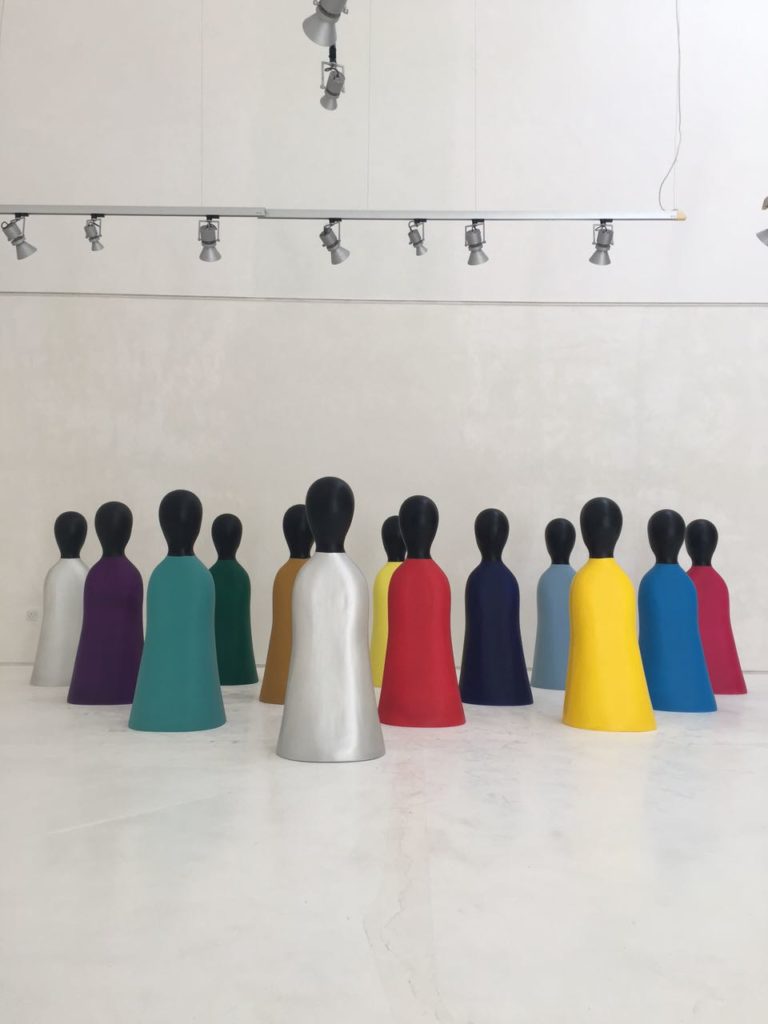

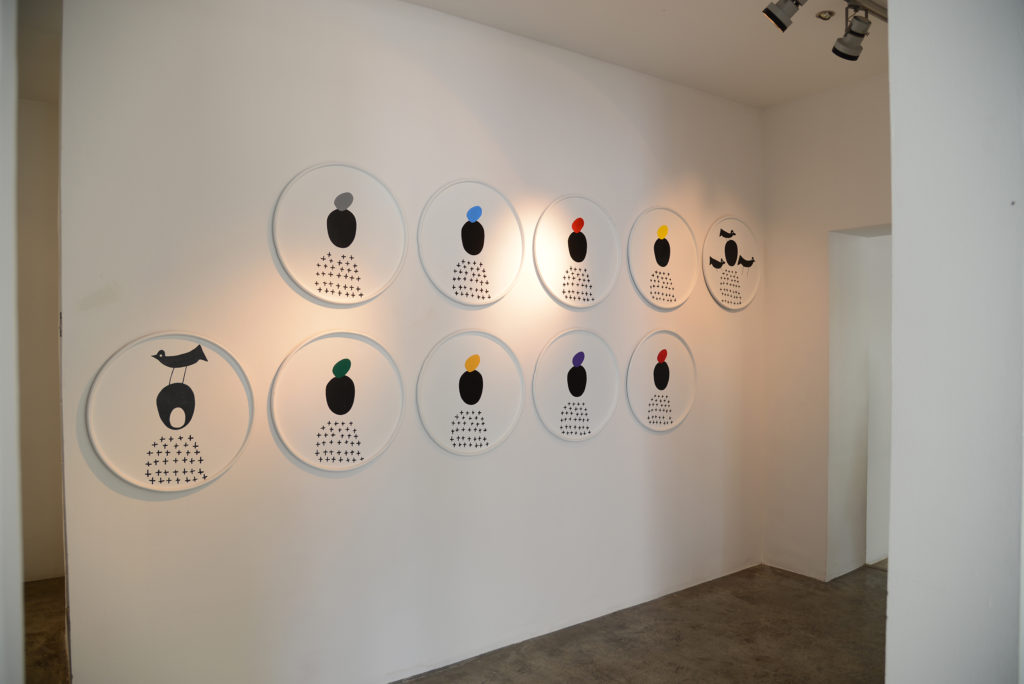
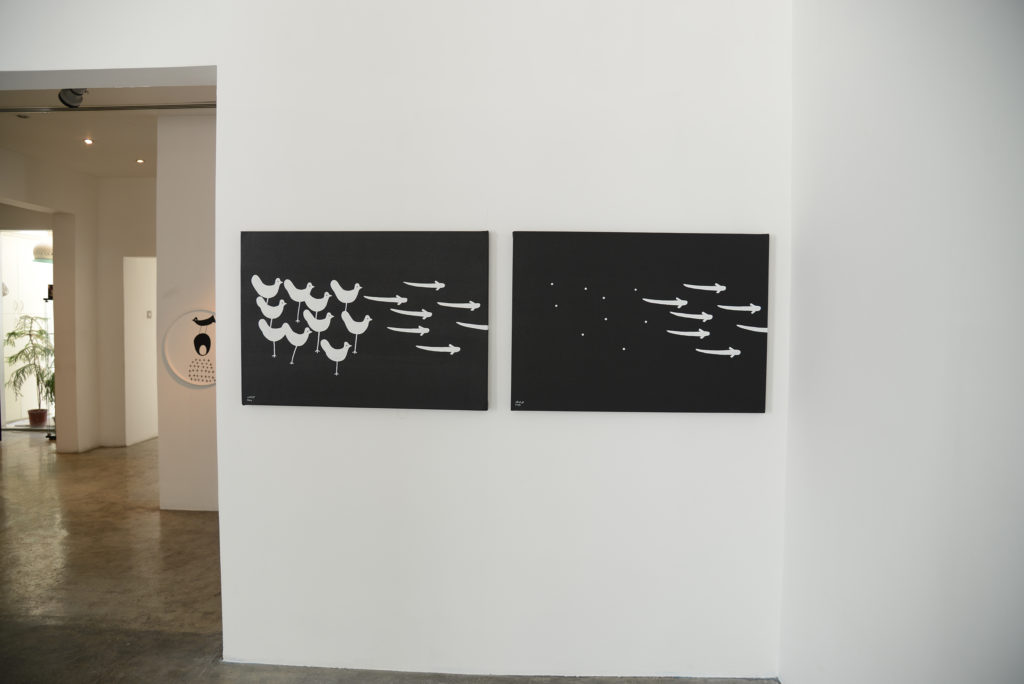
JT: We see saturated colors in your paintings. Do you use actual colors to paint by hand, or do you depend on digital art?
MS: All of my works are hand-painted. I usually start sketching with pencil until it looks good. Lately, I started using Illustrator after completing the sketching phase. I repurpose this draft so I can be able to use it multiple times, which saves a lot of time and effort. After finishing the final draft on the program, I start applying it on the canvas that I had primed earlier and start painting by hand.
JT: What effect did Egypt leave on your art style?
MS: A vivid memory of time and place.
JT: Where do you take inspiration from and when are you most inspired?
MS: From the past and present traditions that are practiced in my country, but only after I repurpose them with my simple and spontaneous style. Honestly, I don't know when I’m most inspired! I just wait for the spark that makes me jump for my pencil so I can start sketching.
JT: What makes you different from other artists? Describe your style in a sentence.
MS: Simple art elements.
JT: Whether from the past or the present, which artist would you like to collaborate with?
MS: If I had gotten the opportunity, I would choose Abdel Hadi El-Gazzar from the past and Huda Lutfi from the present.
JT: How do you start your day as an artist? How much time do you take to finish a painting?
MS: I have a full-time job but I practice art as well. I don’t have a specific timespan to complete a painting, because I only work efficiently based on the conditions in my studio.
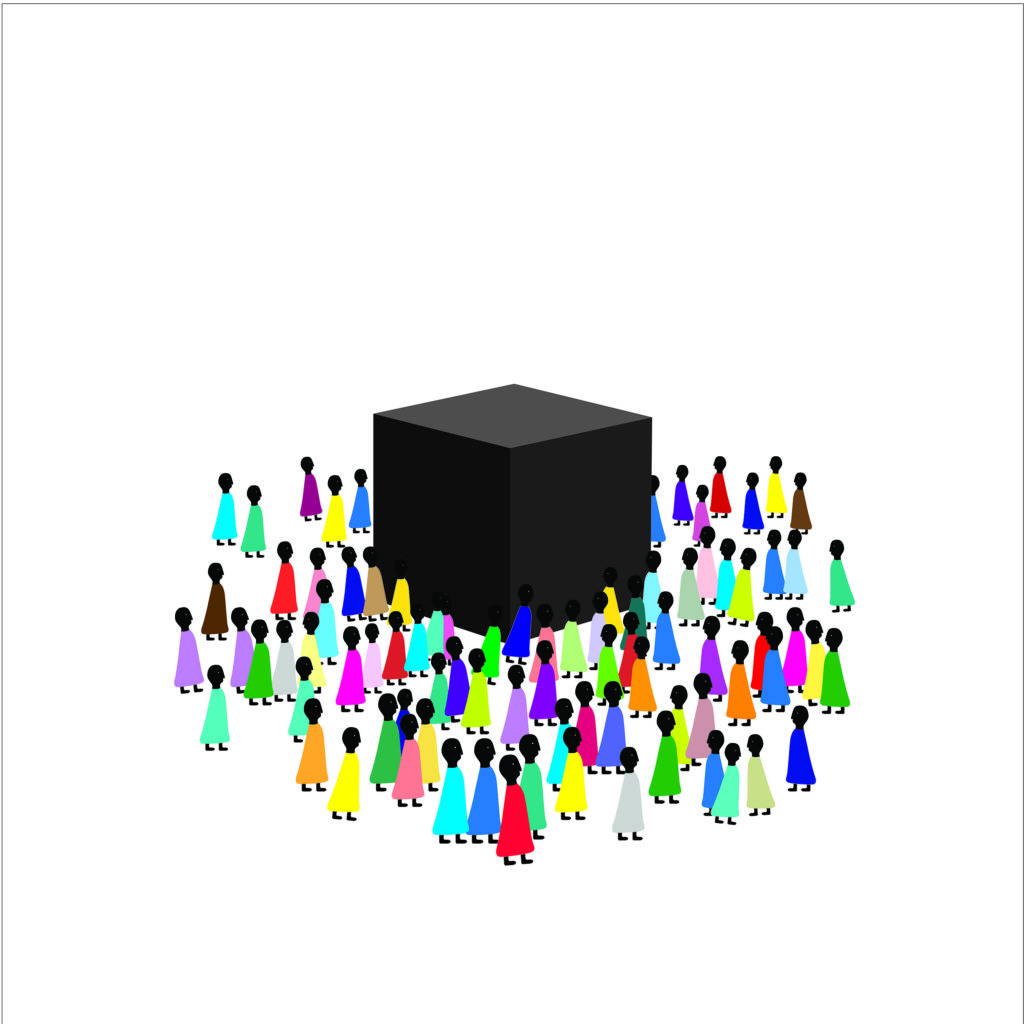
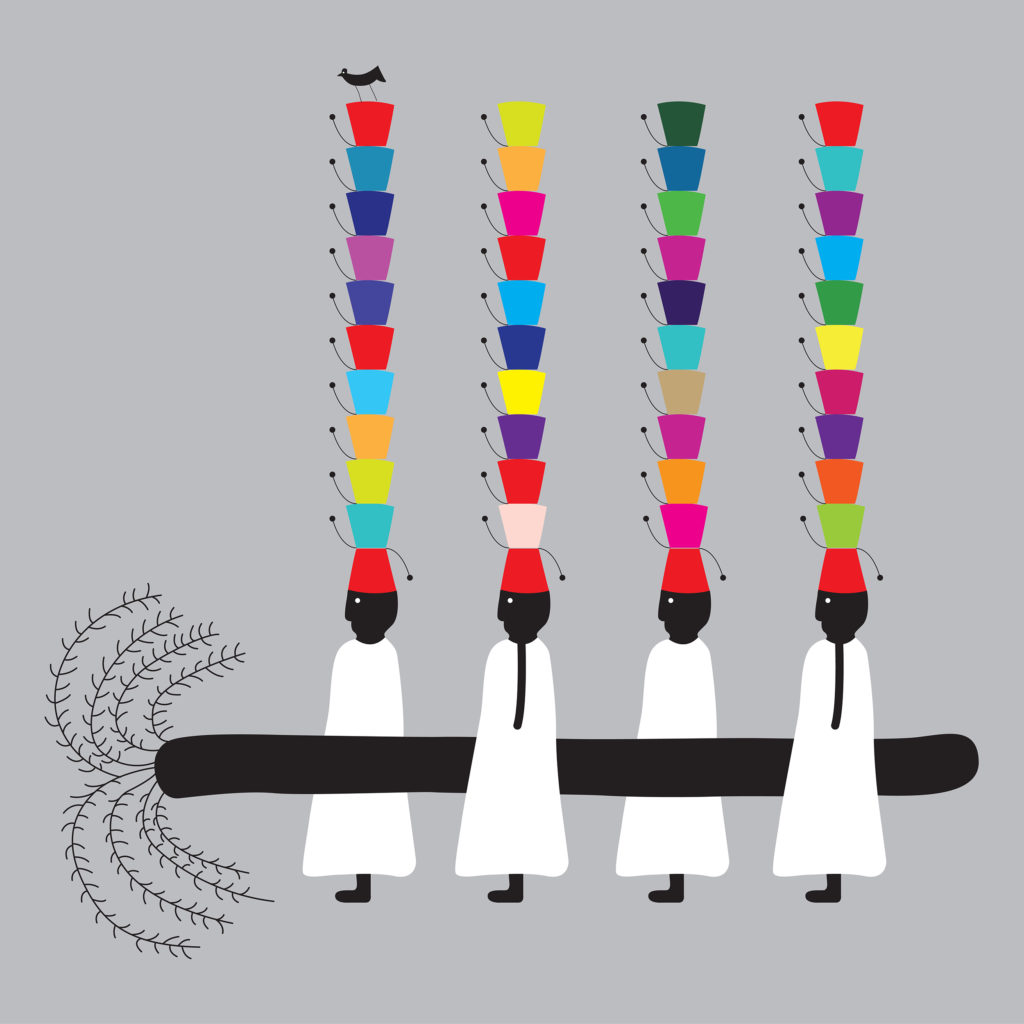
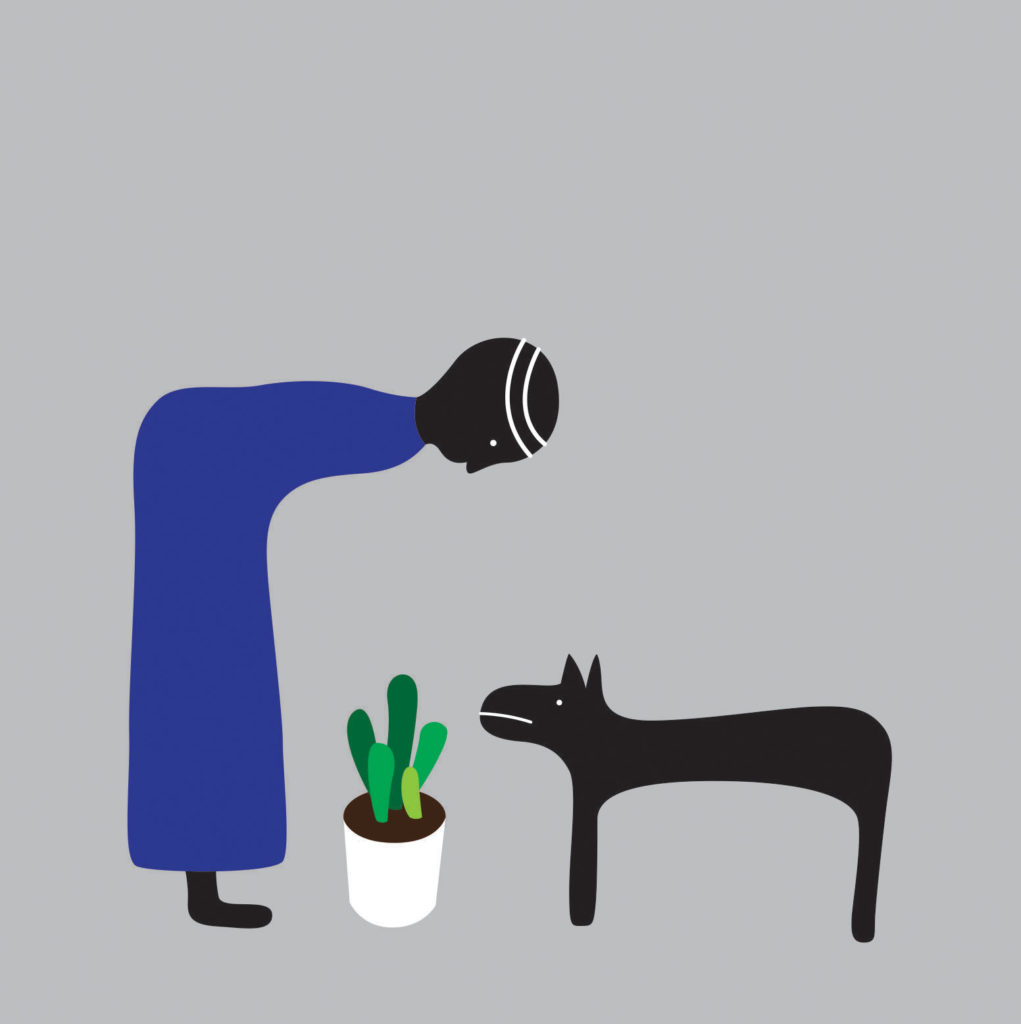
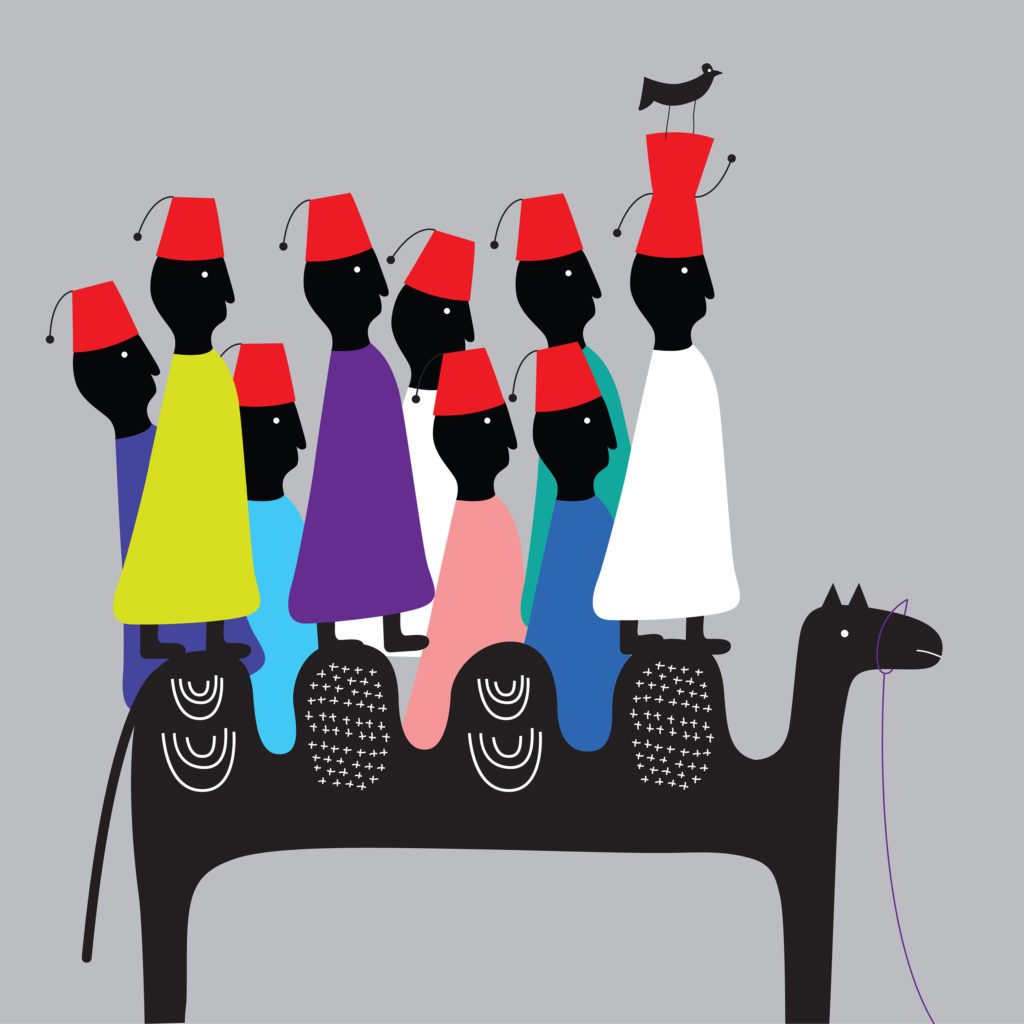
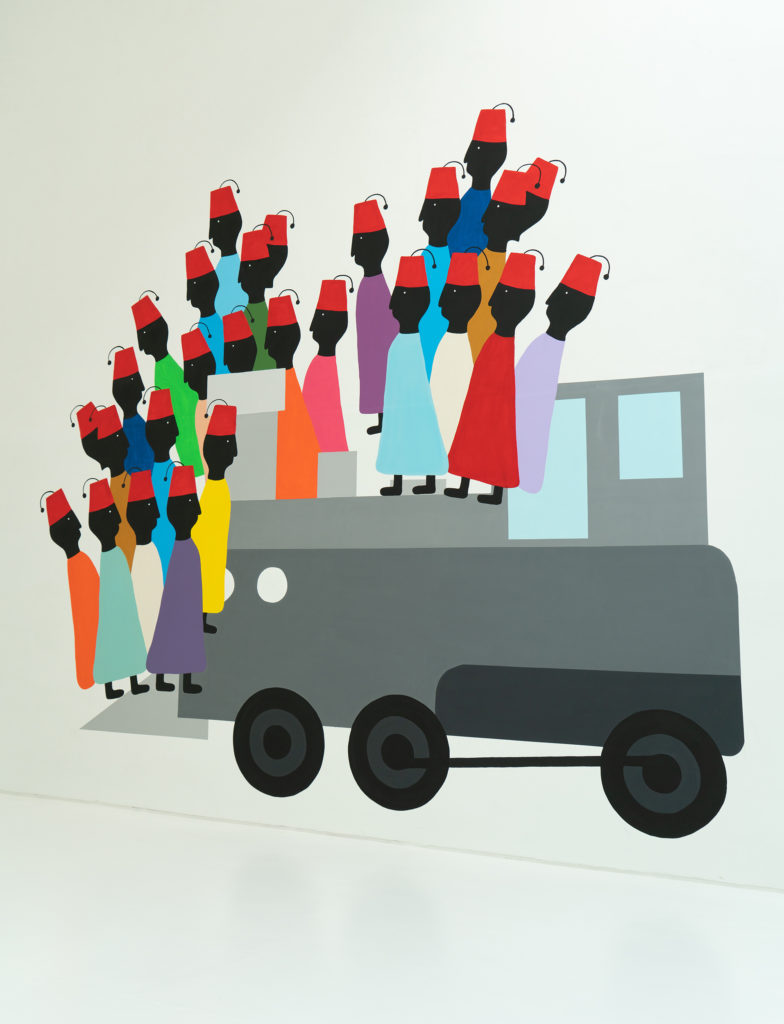
JT: What’s one tool you can’t sacrifice?
MS: The radio! It’s one of the primary tools in my studio that I need to use when I’m working, usually set on the national Egyptian station. I listen to Umm Kulthoum and Abdelhalim, and I love listening to all voices—even the annoying ones. The radio has a different feel from playing music on the phone; the static of the sounds help me work, because I can’t move in a quiet environment.
JT: What message would you like to deliver to the world through your art?
MS: The act of creating art and expressing myself is in itself a message to moving forward.
JT: What would you like to say to the emerging artists who seek to spread their work in the Arab World?
MS: My kind regards to all inspiring creatives. I would advise them to keep practicing and following artists at their exhibitions. That way, they’ll merge with the art world and will learn plenty.
JT: Who is Mohamed and why did he choose to express via art out of all things?
MS: Mohamed is the human, and art is what chose me.
